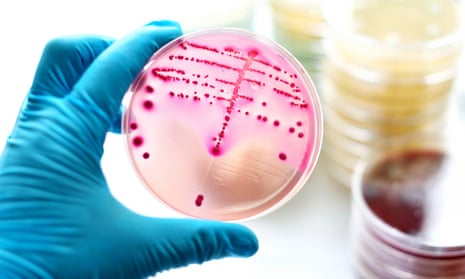Many antibiotics are unavailable in poorer countries despite higher infection rates, exacerbating the threat of drug-resistant superbugs, according to a report to be presented to world leaders and the bosses of top pharmaceutical companies in Davos.
The report, released by the Access to Medicine Foundation, an Amsterdam-based non-profit group, also shows that the number of new treatments being developed for common infectious diseases such as pneumonia, tuberculosis and gonorrhoea has fallen.
Common infections have become increasingly harder to treat globally. In 2018, a British man was the first person in the world to be diagnosed with a strain of gonorrhoea resistant to all antibiotics normally used to treat the disease.
In less wealthy countries, when the best antibiotics are unavailable, doctors are often forced to use inferior drugs or delay treatment, leading to the rise of drug-resistant bacteria. In Brazil, Indonesia and Russia, 40-60% of infections are caused by superbugs. In India, the proportion rises to more than 70% for several common bacteria.
The study, which assesses 30 of the world’s top drugmakers on their efforts to address drug-resistant infections, was funded by UK Aid and the Dutch ministry of health.
Poorer countries have rising rates of drug-resistance as they struggle to access effective treatments. The report found that, of 13 newly developed antibiotics, only three are available in 10 or more of the world’s 102 low- and middle-income countries. However, many older, off-patent antibiotics that are still effective are also unavailable: of 24 such “forgotten” antibiotics, only 14 are supplied to poorer countries.
More people die from a lack of access to medicine than from drug resistance, the report says.
A total of 138 vaccines or drugs are in development worldwide targeting 18 bacterial and fungal infections, down from 175 projects two years ago. However, 51 are in late-stage clinical trials, compared with 40 in 2018. This is a cause for concern, says the Access to Medicine Foundation.
Because of the low profitability of antibiotics, just a handful of pharmaceutical companies are developing and manufacturing them, led by the UK’s GlaxoSmithKline (GSK), which is developing almost a fifth of all projects, along with US firms Pfizer and Johnson & Johnson, and Japan’s Shionogi and Otsuka.
Since 2018, two more companies – Switzerland’s Novartis and France’s Sanofi – have retreated from developing new antibiotics, while two US companies – Achaogen and Melinta – have filed for bankruptcy.
Drugs in late-stage clinical trials include treatments from GSK for tuberculosis and gonorrhoea, and a medicine from Johnson & Johnson for drug-resistant tuberculosis in adolescents.
Among smaller firms, the Massachusetts-based antibiotics developer Entasis, which was spun off from AstraZeneca in 2015, leads on research. It is developing four medicines that target bacteria in the highest threat category defined by the World Health Organisation such as A baumannii, which can cause pneumonia and urinary tract infections.
Moreover, more companies are taking steps to reduce the risk of overselling antibiotics and antifungal medicines to doctors, and Pfizer has become the first company to publicly share its data on drug resistance from its surveillance programmes.
Jayasree Iyer, executive director of the Access to Medicine Foundation, stressed the need for companies and public sector organisations to work together to combat the rise of superbugs, and held up a subscription-based “Netflix model” as a way of spurring on drugmakers to invest more in new treatments.
The UK government revealed in July an NHS project to test a subscription-style model that offers pharmaceutical companies upfront payment for an unlimited supply of drugs over a certain time period, rather than payment based on the volume of drugs sold, as is currently the case. Sweden is also piloting a similar model.
